意面的做法
概括:这道题是洋胤橇同学的课后英语练习题,主要是关于意面的做法,指导老师为童老师。自制意大利面是一道美味佳肴,主料是意面,西红柿。
题目:意面的做法
解:培根肉的:
Ingredients (serves 4)
400g dried spaghetti
50g pkt pine nuts
250g pkt short cut rindless bacon, cut into strips
2 tsp Galiko crushed garlic
300g container light sour cream
1/2 cup chopped fresh continental parsley
Method
Cook the spaghetti in a large saucepan of boiling water according to packet instructions or until al dente. Drain and return to the pan.
Meanwhile, heat a non-stick frying pan over medium heat. Add the pine nuts and cook, tossing for 5 minutes or until toasted. Transfer to a bowl and set aside. Add the bacon and garlic to the frying pan and cook for 4-5 minutes or until crisp. Pour in the sour cream and stir to combine. Cook for a further 3 minutes or until reduced slightly.
Toss the bacon mixture and parsley through the pasta. Divide among serving bowls and sprinkle with pine nuts. Serve immediately.
波伦亚酱的:
Preparation Time
10 minutes
Cooking Time
15 minutes
Ingredients (serves 4)
6 short-cut bacon rashers, excess fat trimmed
375g dried spaghetti
2 tsp olive oil
400g lean beef mince
1 x 575g jar bolognese pasta sauce
1/3 cup loosely packed shredded fresh basil leaves
Shaved parmesan, to serve
Method
Heat a frying pan over medium-high heat. Add half the bacon and cook for 2 mins each side or until crisp. Transfer to a plate lined with a paper towel. Repeat with remaining bacon. Coarsely chop and set aside.
Cook spaghetti following packet directions, until al dente. Drain well.
Meanwhile, heat oil in the frying pan over high heat. Add mince and cook, uncovered, stirring with a wooden spoon, for 3-4 mins or until the mince changes colour. Pour in pasta sauce and simmer over medium heat, stirring occasionally, for 5 mins. Remove from heat.
Stir in the basil and half the bacon. Divide pasta among bowls and spoon over sauce. Top with remaining bacon and parmesan.
Notes
You can substitute prosciutto for bacon if desired. You will need 100g prosciutto, excess fat trimmed.
海员式:
Ingredients (serves 6)
2 tbs olive oil, plus extra to toss
1 onion, finely chopped
3 garlic cloves, crushed
1 cup (250ml) dry white wine
3 tbs tomato paste
2 x 410g cans crushed tomatoes
500g spaghetti
500g marinara mix*
300g black mussels, washed, de-bearded
2 tbs chopped flat-leaf parsley
Method
Heat oil in a large saucepan over medium heat, add onion and cook for 3-4 minutes or until softened.
Add garlic and wine, and simmer 2 minutes. Add paste and crushed tomatoes, and simmer 15-20 minutes further, stirring occasionally until slightly thickened. Season well.
Cook the pasta in boiling, salted water until al dente. Drain and toss in a little olive oil.
Add marinara mix and mussels to tomato sauce, cover with lid and cook 3-4 minutes over medium-high heat, discarding any mussels that do not open.
Stir in parsley, then toss the sauce through the pasta and serve.
Notes
* A mix of fresh seafood, from fish-mongers and good supermarkets.
卡本娜拉式:
Ingredients (serves 4)
400g spaghetti
1 tbs olive oil
200g sliced flat pancetta (see note), cut into 1cm-wide strips
2 garlic cloves, finely chopped
3 eggs, plus 1 extra yolk
100ml thickened cream
2/3 cup (50g) freshly grated parmesan, plus extra to serve
2 tbs chopped flat-leaf parsley leaves
Method
Cook pasta in a large pan of boiling salted water according to the packet instructions. Meanwhile, heat oil in a frypan over medium heat. Cook pancetta, stirring, for 2-3 minutes until beginning to crisp. Add garlic for 30 seconds, then set pan aside.
Place eggs, yolk, cream and parmesan in a bowl. Season, then mix gently with a fork. Drain pasta, then return to pan. Quickly add egg and pancetta mixtures and parsley. Toss to combine - the heat from the pasta will cook the egg slightly and form a creamy sauce. Serve immediately with extra parmesan.
Notes
From selected delis and butchers.
全素:
Ingredients (serves 4)
1 tablespoon olive oil
1 large brown onion, chopped
2 garlic cloves, crushed
2 medium zucchini, chopped
200g yellow squash, chopped
1 medium eggplant, chopped
3/4 cup red lentils, rinsed, drained
2 large tomatoes, chopped
700g bottle Italian tomato pasta sauce
300g broccoli, cut into small florets
1/4 cup chopped fresh flat-leaf parsley leaves
375g dried spaghetti pasta
shaved parmesan cheese, to serve
Method
Heat oil in a large, heavy-based saucepan over medium heat. Add onion and garlic. Cook for 5 minutes or until onion is just soft.
Add zucchini, squash and eggplant. Cook, stirring, for 5 minutes. Add lentils, tomato, pasta sauce and 1/2 cup cold water. Bring to the boil. Reduce heat to medium-low. Cook, covered, for 20 minutes. Add broccoli. Cook, uncovered, for 10 minutes or until lentils are tender.
Meanwhile, cook pasta in a saucepan of boiling, salted water, following packet directions, until tender. Drain.
Divide pasta between bowls. Top with vegetable sauce. Serve with parmesan cheese.
以上是常见的五种,第二种波伦亚酱的最受欢迎.
参考思路:
= = 你是要知道 “意大利面的做法”的英文
还是要知道 意大利面的“做法的英文”?
举一反三
例1: 【怎么吃意大利面英文】[英语练习题]
思路提示:
这里意大利面呢,就分两种理1、如果是意大利面条的统称,就是pasta;2、如果是意大利细面,就叫spaghetti.
句子可以翻译为:How to eat pasta/ spaghetti?
例2: 【怎么做意大利面.用英文写.】
思路提示:
细面条480g,香肠65g,茄子80g,西红柿65g,柿子椒30g,豆角3
0g,葱头65g,色拉油适量,大蒜65g,丘比千岛酱80g
【制作过程】
1.把面条煮熟,西红柿切成块,焯好的豆角切成3cm长.
2.茄子、柿子椒,切成片,葱头切细丝,大蒜切碎,香肠切成斜块.
3.锅中放油加热,把第2步骤已弄好的原料倒入锅中炒.
4.将其混和用丘比千岛酱调制.
[ Raw material ] thin noodles 480g,sausage 65g,eggplant 80g,tomato 65g,persimmon pepper 30g,cowpea 3 0g,onion 65g,salad oil right amount,garlic 65g,the earthen mound compares thousand islands sauces 80g [ manufacture process ] 1.The noodles cooked tomatoes into pieces,good-cheuk 9:20 into 3cm long.2. The eggplant,the persimmon pepper,cuts Large expanse of,onion cuts the filament,the garlic cuts to pieces,the sausage slivers the slanting block.3. In the pot puts the oil heats up,the raw material which does well has poured into in the pot the 2nd step fries.4. Mixes it with the earthen mound compares thousand islands sauces modulates.
例3: 意大利面英文介绍不要做法,只要“里面有什么东西”,“这个面在意大利有什么地位”.
思路提示:
History of Pasta
Nothing says Italy like its food,and nothing says Italian food like pasta.Wherever Italians have immigrated they have brought their pasta and so today it is basically an international staple.Unlike other ubiquitous Italian foods like Pizza and tomato sauce,which have a fairly recent history pasta may indeed have a much older pedigree going back hundreds if not thousands of years.To begin to unravel the long an often complex world of pasta we have to look at its origins and some of the myths surrounding this now worldwide food.
Many schoolchildren were taught that the Venetian merchant Marco Polo brought back pasta from his journeys in China.Another version states that Polo discovery was actually a rediscovery of a foodstuff that was once popular in Italy in Etruscan and Roman times.Well Marco Polo might have done amazing things on his journey but bringing pasta to Italy was not one of them,it was already there in Polo's time.There is some evidence of an Etrusco-Roman noodle made from the same durum wheat as modern pasta called "lagane" (origin of the modern word for lasagna).However this food,first mentioned in the 1st century AD was not boiled like pasta,it was cooked in an oven.Therefore ancient lagane had some similarities,but cannot be considered pasta.The next culinary leap in the history of pasta would take place a few centuries later.
Pasta Today
It is estimated that Italians eat over sixty pounds of pasta per person,per year easily beating Americans,who eat about twenty pounds per person.This love of pasta in Italy far outstrips the large durum wheat production of the country; therefore Italy must import most of the wheat it uses for pasta.Today pasta is everywhere and can be found in dried (pasta secca) and fresh (pasta fresca) varieties depending on what the recipes call for.The main problem with pasta today is the use of mass production to fill a huge worldwide demand.And while pasta is made everywhere the product from Italy keeps to time-tested production methods that create a superior pasta.
Dried Pasta
There are roughly 350 different shapes and varieties of dried pasta in Italy,even more counting regional differences.Shapes range from simple tubes to bow ties (farfalle,which actually means "butterfly"),to unique shapes like tennis rackets (racchette).Many,but not all of these types are usually available wherever pasta is made.By Italian law dried pasta must be made with 100% durum semolina flour and water,a practice that all but the worst quality pasta makers worldwide have since adhered to.However there are two factors in dried pasta from Italy that make it typically better than most other products:extrusion and drying methods.
Dried pasta,especially the more complex shapes (such as radiatore) are designed for grabbing and holding onto sauces.Dried tube pasta (ziti or penne) often has ridges or slight abrasions on the surface to hold onto the pasta sauce as well.These ridges and bumps are created during the extrusion process,when the pasta is forced from a copper mold and cut to desired length before drying.These molds,while expensive and prone to wear are favored for making the best dried pasta.However most producers worldwide use steel molds that produce pasta that is too smooth to hold onto sauce.Fortunately more pasta makers outside of Italy are starting to use the older style copper molds.
After the pasta is cut it must be dried using a process of specific temperature and time.This is another area where mass produced pasta falls short of good Italian pasta made the correct way.The mass produced pastas are dried at very high temperatures for a shorter time than quality pasta.Traditional pasta is allowed to dry slower,up to 50 hours at a much lower temperature.It is after the pasta is fully dried that it is packaged.The result is a product with a much better mouth-feel,quicker cooking time,and superior sauce holding noodles.
例4: 意大利面的英文简介英文的意大利面的又来或介绍都可以100字左右,不要太长[英语练习题]
思路提示:
[ Raw material ] thin noodles 480g,sausage 65g,eggplant 80g,tomato 65g,persimmon pepper 30g,cowpea 3 0g,onion 65g,salad oil right amount,garlic 65g,the earthen mound compares thousand islands sauces 80g [ manufacture process ] 1.The noodles cooked tomatoes into pieces,good-cheuk 9:20 into 3cm long.2. The eggplant,the persimmon pepper,cuts Large expanse of,onion cuts the filament,the garlic cuts to pieces,the sausage slivers the slanting block.3. In the pot puts the oil heats up,the raw material which does well has poured into in the pot the 2nd step fries.4. Mixes it with the earthen mound compares thousand islands sauces modulates.
例5: 怎么吃意大利面条要英文写怎么吃的过程将酱汁放在面上,用叉子稍微搅匀,再用叉子旋转适量面条,太多了不好放进嘴里,不雅观,适量就好,然后确定一下在送到嘴里之前不会再掉下来[英语练习题]
思路提示:
The sauce on the top,with a slightly mix,use a rotation amount of noodles,too much bad is put into the mouth,unsightly,moderation,and then check in to the mouth before won't fall down,is to ensure the fork winding noodles have a certain integrity,then you can eat the
相关思考练习题:
题1:意面的几种做法,你知道吗
点拨:意面做法 材料:牛肉馅500克,洋葱一颗切碎,胡萝卜2根切碎,西芹4根切碎,去皮,番茄5个打浆,橄榄油100克,盐,鸡精,桂树叶,黑胡椒碎适量,白葡萄酒半杯。 做法: 1. 在锅中加水烧开。(水中要加少许盐和食油)。开锅后将面条成辐射状放入锅...
题2:关于意大利面的做法和吃法
点拨:主料:意大利面200克、圣女果30克、豌豆20克、火腿30克 辅料:生抽8克、蚝油15克、番茄酱15克、白糖2克、花生油20克 意大利面的做法: ①首先,番茄切片; ②豌豆焯水后捞出;火腿切片。 ③然后,生抽、蚝油、番茄酱调成酱汁备用; ④意粉放滚水里煮...
题3:意面基础如何烹饪美味意面的做法
点拨:材料初榨橄榄油(极品哦),进口食品店买来的意大利面,西红柿或番茄两个,洋葱,红辣椒,牛肉或火腿一些(选自己喜欢的),葱和蒜,调味料 做法 1、先煮面,自己尝熟了就可以,有的朋友说7-10分钟,这个不一定,我煮10分钟还是很硬...... 2、面...
题4:怎么煮意大利面的做法
点拨:主料 意大利面 100克 牛肉 100克 西红柿 1个 洋葱 半个 胡萝卜 适量 辅料 食盐 3勺 味精 1勺 蒜 2瓣 番茄酱 2勺 黄油 15克 黑胡椒 少许 步骤 1.牛肉切末。 2.大蒜切末。 3.洋葱切叮 4.胡萝卜切叮 5.西红柿切叮 6.黄油小火融化。 7.放入蒜末、洋...
题5:意大利面的做法
点拨:主料 百味来传统意面 200g 洋葱 120g 西红柿 120g 青椒 120g 猪肉末 200g 辅料 油 适量 盐 适量 酱油 适量 胡椒粉 适量 大蒜 半个蒜头 小葱 适量 西红柿酱 4小汤勺 步骤 1.百味来传统意大利面 2.备好主材料意大利面。注:意大利面有多种不同形状...
热门曲谱
 刘德华喊话四大天王合体做节目:他们愿意我 彭于晏带违规水果过海关被罚 据台湾媒体报道,彭于晏7月1日返回台北在松山机场过海关的时候,因为不小心带了水果,被海关查获并罚款3000元台币 。有台湾媒体询问机场工作人...[详情]分类:知识库时间:12:37
刘德华喊话四大天王合体做节目:他们愿意我 彭于晏带违规水果过海关被罚 据台湾媒体报道,彭于晏7月1日返回台北在松山机场过海关的时候,因为不小心带了水果,被海关查获并罚款3000元台币 。有台湾媒体询问机场工作人...[详情]分类:知识库时间:12:37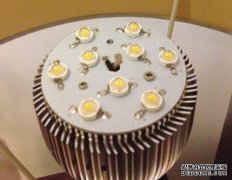 led和节能灯哪个好
led和节能灯哪个好 概括:这道题是贲友颗同学的课后练习题,主要是关于led和节能灯哪个好,指导老师为黎老师。LED节能灯是继紧凑型荧光灯(即普通节能灯...
[详情]分类:知识库时间:14:47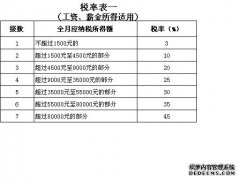 个人所得税税率
个人所得税税率 概括:这道题是蒲值暇同学的课后练习题,主要是关于个人所得税税率,指导老师为阚老师。
题目:个人所得税税率
解:<...[详情]分类:知识库时间:14:51 个税计算方法
个税计算方法 概括:这道题是文缘卣同学的课后练习题,主要是关于个税计算方法,指导老师为惠老师。负所得税制度的意义财税部门出台了给予弱势群...
[详情]分类:知识库时间:14:51 李光洁宣布结婚 彭于晏带违规水果过海关被罚 据台湾媒体报道,彭于晏7月1日返回台北在松山机场过海关的时候,因为不小心带了水果,被海关查获并罚款3000元台币 。有台湾媒体询问机场工作人...[详情]分类:知识库时间:12:37
李光洁宣布结婚 彭于晏带违规水果过海关被罚 据台湾媒体报道,彭于晏7月1日返回台北在松山机场过海关的时候,因为不小心带了水果,被海关查获并罚款3000元台币 。有台湾媒体询问机场工作人...[详情]分类:知识库时间:12:37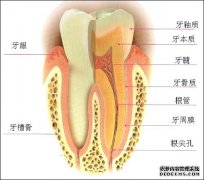 什么可以美白牙齿
什么可以美白牙齿 概括:这道题是贡泼俊同学的课后练习题,主要是关于什么可以美白牙齿,指导老师为井老师。冷光美白牙齿顾名思义就是用冷光来美白牙...
[详情]分类:知识库时间:14:58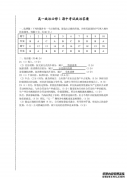 什么是连带责任
什么是连带责任 概括:这道题是满澄檬同学的课后政治练习题,主要是关于什么是连带责任,指导老师为宦老师。
题目:什么是连带责任
...[详情]分类:知识库时间:14:58 趣头条与江苏卫视达成战略合作 彭于晏带违规水果过海关被罚 据台湾媒体报道,彭于晏7月1日返回台北在松山机场过海关的时候,因为不小心带了水果,被海关查获并罚款3000元台币 。有台湾媒体询问机场工作人...[详情]分类:知识库时间:12:37
趣头条与江苏卫视达成战略合作 彭于晏带违规水果过海关被罚 据台湾媒体报道,彭于晏7月1日返回台北在松山机场过海关的时候,因为不小心带了水果,被海关查获并罚款3000元台币 。有台湾媒体询问机场工作人...[详情]分类:知识库时间:12:37 利率怎么算
利率怎么算 概括:这道题是从纲凑同学的课后练习题,主要是关于利率怎么算,指导老师为殳老师。银行利率表示一定时期内利息量与本金的比率,通...
[详情]分类:知识库时间:14:58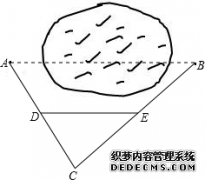 名贵树种
名贵树种 概括:这道题是山翁灿同学的课后练习题,主要是关于名贵树种,指导老师为谈老师。
题目:名贵树种
解: ...[详情]分类:知识库时间:14:56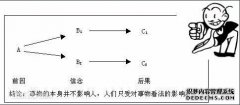 埃利斯
埃利斯 概括:这道题是苏似涡同学的课后政治练习题,主要是关于埃利斯,指导老师为裴老师。
题目:埃利斯
解: ...[详情]分类:知识库时间:14:54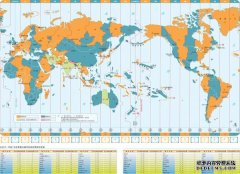 差异
差异 概括:这道题是巫唐抖同学的课后练习题,主要是关于差异,指导老师为左老师。暂时性差异是由税收法规与会计准则确认时间或计税基础...
[详情]分类:知识库时间:14:53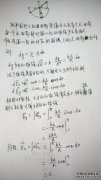 平衡梁
平衡梁 概括:这道题是浦晓淖同学的课后练习题,主要是关于平衡梁,指导老师为赵老师。平衡梁为吊装机具的重要组成部分,可用于保持被吊设...
[详情]分类:知识库时间:14:54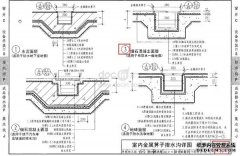 建筑图集
建筑图集 概括:这道题是蓟侠位同学的课后政治练习题,主要是关于建筑图集,指导老师为焦老师。《新疆传统建筑图集》是2009年新疆科学技术出...
[详情]分类:知识库时间:14:54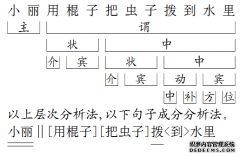 成分分析
成分分析 概括:这道题是颜仑徽同学的课后练习题,主要是关于成分分析,指导老师为戈老师。
题目:成分分析
解: ...[详情]分类:知识库时间:14:56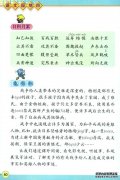 无坚不摧之力
无坚不摧之力 概括:这道题是路婆掖同学的课后政治练习题,主要是关于无坚不摧之力,指导老师为祁老师。
题目:无坚不摧之力
解:<...[详情]分类:知识库时间:14:54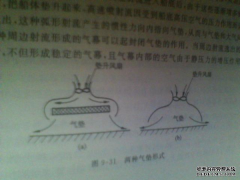 气垫船原理
气垫船原理 概括:这道题是席洞朴同学的课后练习题,主要是关于气垫船原理,指导老师为毛老师。通风工程是送风、排风、除尘、气力输送以及防、...
[详情]分类:知识库时间:14:54 海狸
海狸 概括:这道题是项筛卦同学的课后练习题,主要是关于海狸,指导老师为钱老师。
题目:海狸
解: ...[详情]分类:知识库时间:14:56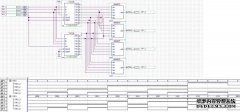 38译码器
38译码器 知识点:《38译码器》 收集:瞿收霉 编辑:桂花
[详情]分类:知识库时间:10:57
本知识点包括:1、38译码器在单片机系统中的作用是什么? 2、求vh...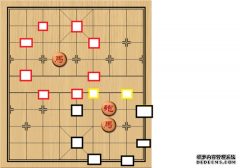 aidma
aidma 知识点:《aidma》 收集:蒯超峦 编辑:栀子花女孩
[详情]分类:知识库时间:12:08
本知识点包括:1、SOV/SOM是什么?AIDMA和AIDAS理论代表什么...
